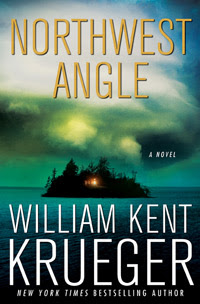by Jean Herny Mead
New York Times bestselling author Allison Brennan has published 13 books and three short stories during her career. A former senior consultant for the California State Legislature, she's the mother of five who writes three books a year.
Allison, how does a mother of five manage to write three novels a year?
I don’t sweat the small stuff. Like any working mother, I prioritize. I write when the kids are in school and I write after they go to bed. When I’m close to deadline, I often go to Starbucks after dinner and leave my husband in charge. I have no life outside of my family and writing! But honestly, I wouldn’t have it any other way. I love both.
How did your former FBI agent, who became a crime novelist, come about?
The Prey was my fifth book, and my first sale. I started the book years before I got serious about my writing, then like everything else I’d begun, I set it aside. At some point, I found it on my computer—it was 300 incomplete pages of garbage. Great premise, but nothing behind it.
I thought about Rowan Smith, my heroine. Why did she leave the FBI? Why did she start to write crime fiction? At about the same time, I read an article about a murder-suicide. A man who killed his family, then himself. His neighbors and colleagues were stunned—they couldn’t reconcile the man they knew with a killer. I then played the “What if?” game . . . what if one of his children survived the attack? What would she be like? What would she do with her life? How would her past affect her? She became Rowan Smith.
I ended up deleting all but the first two chapters of that first draft, and wrote it fresh.
Do you have a background in journalism or law enforcement? If not, how do you research your novels?
I’ve always been an avid reader. Before I sold, I relied on books for my research. I’m not shy, so I’m always willing to ask questions of people who know more than I do about something I’m interested in. I’m sort of the “Jill of all trades” – I learn a lot about a subject, write about it, then promptly forget most of the details.
Through writing, I’ve found many experts—cops, doctors, criminalists. It’s really a matter of being diligent, double checking, and ultimately, realizing that my primary purpose is to entertain my reader. I just need to know whether a scenario is plausible. It doesn’t have to be probable, just believable. If I can reason it out, I’ll write about it.
I’ve been very lucky now that I’m published to have greater access to experts, and bring in a greater realism to my books. For example, I met my primary FBI contact during research for my eighth book,
Tempting Evil, the second in the Prison Break trilogy. I had a secondary character, fugitive apprehension specialist in the FBI, Mitch Bianchi, who was tracking a convict who’d escaped during the earthquake that totaled San Quentin in Killing Fear. Mitch tracked the fugitive to Montana. I was working on revisions and had a few questions that my regular contacts couldn’t seem to answer, so once Washington cleared me, I was given access to the media relations special agent (PIO) in the Sacramento FBI.
I sent him a long list of specific questions and learned real quick that my entire set-up was wrong. Mitch would never have tracked the fugitive through multiple jurisdictions. If he had information that the fugitive was in another state, he would contact that jurisdiction and they’d follow up. This was not good news. I was on a tight deadline—I was working on editor revisions, the book was DONE, and I was just cleaning it up. I couldn’t change his character because that would change the whole book. I asked the PIO a bunch of questions, trying to dig myself out of the hole I’d written (thank you television—NOT!) and then hit on the right question.
“Well, if an agent disobeyed orders or broke the rules by tracking a fugitive into another jurisdiction without following established protocols, what would happen?” The answer? Anything from a reprimand to termination. I love shades of gray!
Not only did this work for the book (and saved me a major last minute rewrite) but it worked for my character. Mitch doesn’t play by the rules, he’s been reprimanded many times and gone before the Office of Professional Responsibility more than once. He’s also smart, dedicated, and decorated.
So at the beginning of
Playing Dead, Mitch is off the case because of his blatant disregard of direct orders in Tempting Evil, and is confronted with another difficult choice—if he works the case, he’ll be fired. He’s run out of chances. I had not only established his character, but his primary conflict. It worked so well you’d have thought I’d planned it!
I am truly blessed to have so many resources. In the past three years, some of my research excursions included participating in two SWAT training exercises (with another scheduled in March); touring the FBI Academy at Quantico (going back in October), visited FBI Headquarters in D.C.; visiting Folsom State Prison (with the amazing bestselling thriller writer James Rollins); and two trips to the Sacramento County Morgue–once for a tour and to observe an autopsy, the second time to learn how they preserve evidence. If you really twist my arm, I’ll admit being a non-ambulatory victim during SWAT training was probably the most fun I’ve had in a long, long time . . . which shows you what a boring life I lead! In fact, on Tuesday I’m participating in another SWAT exercise. Not for any specific purpose, but simply to internalize what happens and try to put myself in their shoes . . . and the bad guy.
I’m going back to Quantico this fall--perfect timing to start writing Lucy Kincaid #5, which takes place at Quantico while Lucy is at the FBI Academy. Sometimes, I think I shouldn’t be having so much fun researching . . . but that certainly doesn’t stop me!
Tell us about your Seven Deadly Sins Series.
An evil occult releases the Seven Deadly Sins from Hell as incarnate demons in order to gain eternal youth and beauty. My heroine, Moira O’Donnell, is a former witch who is trying to stop her mother, the occult leader, from fulfilling her agenda.
The Seven Deadly Sins is a supernatural thriller series that asks the question, what is your deadliest sin? If your conscious was stripped bare, what sin would you be vulnerable to?
What kind of consulting did you conduct for the California State Legislature?
I was a senior consultant responsible for constitution communication—essentially, I managed the constituent databases for elected officials as well as wrote communication pieces. For example, I would read and analyze legislation and then summarize it in one page or less.
Tell us about your latest series featuring FBI recruit Lucy Kincaid.
In my sixth book,
Fear No Evil, Lucy Kincaid was a happy-go-lucky high school senior waiting to hear about college acceptances when she was kidnapped by an online predator. Now, she’s a resolute graduate waiting to hear if she’s been accepted into the FBI Academy at Quantico, haunted by the events in
Fear No Evil—where she was kidnapped right before her high school graduation. Lucy has been a favorite of mine since she first walked on the page. I wanted to write a series around her, and was thrilled when my publisher agreed. So many series begin with an established detective or agent in the middle of their career; with Lucy, I start at the beginning, before she’s in the FBI Academy. She’s weeks away from her 25th birthday when
Love Me to Death begins.
This book started with the character—I knew I was writing Lucy’s story. I also knew that while I wanted it to tie into her past, I also needed to make sure that the story stood on its own. I wondered what Lucy would be doing now, six years after she was raped and almost killed by an online predator. She’s done many things—college, internships, applying to the FBI—but it’s her volunteer job with a victim rights group that lands her in serious trouble at the beginning of Love Me to Death when she learns that the predators she thinks she’s helping send to prison are ending up dead.
One of the most interesting--and depressing--presentations was from the Supervisory Special Agent in charge of battling child pornography. And it is a battle. The Internet has made child pornography so widespread and virtually unstoppable. If every cop in the country—local, state, and federal—spent 24 hours a day, 7 days a week pursuing on-line predators for a full year, they wouldn’t be able to stop even ten percent of these horrid crimes. And this only includes crimes against children under 14.
The SSA told us that no one lured in by Dateline’s “To Catch a Predator” program, at that point in 2008, had been arrested or convicted as a result of being “caught” on the show.
And I wondered, what if? What if Lucy found herself in a “catch a predator” type plan . . . but the predators ended up dead? What would she do? I began to think about vigilantism in general, and motivation in particular. The idea opened up more research into average sentences for sex offenders, recidivism rates, and statistic on early release programs. No one thing gave me the story—it was a variety of threads I spun together.
The second book in the series,
Kiss Me, Kill Me, also started with an idea I got through the FBI citizens academy about underage prostitutes. While KMKM has nothing to do with prostitution, the online element of underage girls voluntarily engaging in online sex chats came from what I learned. I wondered what would happen if the girls agreed to meet some of these guys. I read an article about underground parties, then in the course of my research about that found an online photojournal and contacted the photographer. I had a bunch of questions, and he graciously answered. I then decided to set KMKM in New York City with abandoned warehouses and underground parties as the backdrop.
And now, for book three in the series (
If I Should Die, December 2011), I’m researching closed mines in upstate New York. While I can’t travel to the Adirondacks before the book is due to my publisher, I’ve made contact with the owner of a mine here in California to help me with some of the details.
What are the most difficult and most enjoyable aspects of writing for you?
I love writing. I love getting into the heads of my characters and seeing how they react to whatever situation I put them in. I love both writing and revising, editing and proofing. The whole process.
Difficult? I want to make each book better than the last, and because I fear I won’t be able to write stronger, better stories, I tend to panic. I’m constantly worried that what I’m writing is mediocre, that I’ll disappoint my editor and my readers.
How did you acquire an agent?
The old-fashioned way: blind queries. For the first four books I wrote, I received over 200 rejections. For The Prey, I had a feeling I had finally found my voice, that this was “it.” I queried 12 agents and had seven requests for full manuscripts. I ultimately went with an agent at a major NY agency, who sold me to Ballantine and negotiated six contracts for a total of 17 books.
Last year I went through another agent hunt (long story) and the benefit of being a published author means that I could call agents on the phone and most would talk to me and read my work. Out of six agents I spoke with, three offered representation. While just as stressful as my unpublished agent hunt, it was still easier.
Advice to fledgling writers?
Write. Revise. Learn to self-edit. Learn to discern good advice out of all the crappy advice you get. Learn to be self-critical without destroying your confidence. No one is a master out of the gate; even the masters practiced for years. Be smart about the business, because publishing is a business first. Write because you love to write, not because you want to be published. Write because you can’t imagine not writing. Writing is a business, but it’s also creative, and thus unique. You have to love what you write because if you sell, you’ll be writing that type of story potentially for years. Don’t write to trends, because trends change, but write what you love—then position it to fit the market. And while some rules are important—such as punctuation—don’t get hung up on arbitrary rules. Write boldly and with passion, because that’s what it takes to stand out in this tight market. But mostly, write with the love of writing, because even when you curse the computer and your lack of imagination and your fear of failure and your fear of success, even when you think you’re writing total garbage, deep down you love it because it’s you.
Thank you, Allison. You can visit Allison at her website: http://www.allisonbrennan.com/ as well as her blog sites:
http://murderati.com/ and http://murdershewrites.com/
At Facebook: http://www.facebook.com/pages/Allison-Brennan/260434194559
and Twitter: http://www.twitter.com/Allison_Brennan
























